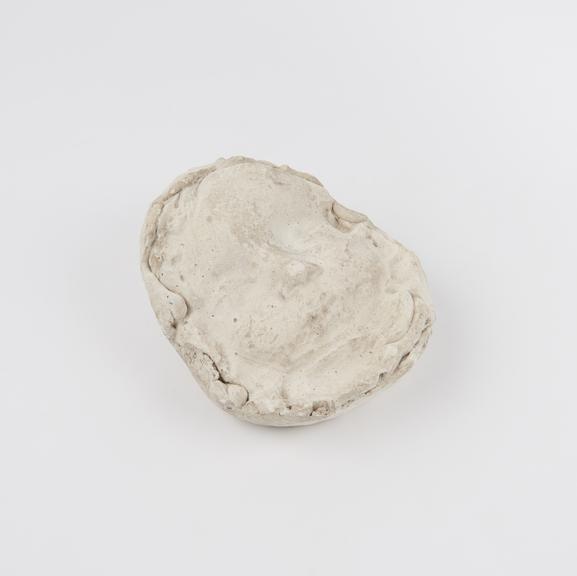In the heart of ancient Roman Lutetia—what we now call Paris—an extraordinary discovery was made that brings us face-to-face with a child who lived nearly two millennia ago. But this wasn’t just another archaeological find. Imagine unsealing a tomb and finding not just the remains of a child, but a perfect impression of its delicate features, preserved for centuries by pure chance.
How could a simple burial turn into such a hauntingly vivid window into the past? The answer lies in a bizarre accident that forever captured the face of a baby who died almost 1,800 years ago. And as fascinating as this discovery is, it’s what was found alongside the child that deepens the mystery.

A Roman Baby Buried with Tender Care
The Romans, known for their elaborate rituals in both life and death, extended that care even to their youngest. In the 1st or 2nd century AD, a Roman infant was laid to rest in Lutetia, the Roman settlement that would one day become Paris. This tiny child, whose identity has been lost to time, was placed in a sarcophagus with one touching, personal object: its feeding bottle.
For centuries, this burial remained sealed beneath the ground, undisturbed by the shifting sands of history. But in a twist of fate, when archaeologists uncovered the child’s tomb, they found something far more than expected. As the cement sealing the sarcophagus leaked over time, it slipped inside and hardened, forming a perfect mold of the infant’s face. The result? A naturally created death mask, a silent but striking reminder of the fragility of life in the ancient world.
A Face Frozen in Time: The Accidental Death Mask
Imagine opening a sarcophagus, expecting only bones, and instead finding the face of a baby, perfectly preserved in the cement that seeped into the tomb centuries ago. The delicate features of this child, which should have been lost to time, were saved by a fluke of nature.
But how did this happen? As the Romans sealed the sarcophagus, cement meant to lock the tomb leaked inside, filling the space and covering the baby’s body. As it hardened, it took the shape of the child’s face, preserving every small detail in eerie, unintentional perfection.
This face, long buried beneath what is now modern-day Paris, is a snapshot of a life cut tragically short, a powerful reminder of mortality in ancient Rome. The accidental creation of the mask is so rare that it almost feels as if the past reached out to leave us with a physical trace of this child’s life.

The Mystery of the Feeding Bottle
But as striking as the death mask is, the discovery of the feeding bottle alongside the infant adds another layer of intrigue. Why was this simple object, so closely tied to nurturing, placed in the tomb? Roman burial practices often included personal belongings, but a feeding bottle seems to tell a story of loss and love—a final act of care from grieving parents.
This bottle, designed to feed a baby that would never drink from it again, serves as a symbol of both the fragility of life and the intimate connection between parent and child. In a world where infant mortality rates were high, the burial speaks to the human experience across time: the desire to protect, even in death, and to provide for the child in some way beyond this world.

A Glimpse into Roman Lutetia
Lutetia, which later grew into Paris, was a bustling Roman city during the time this baby lived and died. The Roman Empire brought its customs, architecture, and lifestyle to this region, shaping the local culture in profound ways. But even in this vibrant urban center, death was never far, especially for infants and children. Roman funerary practices often included the careful burial of children with personal items that connected them to their short lives.
This burial, and the astonishing death mask it created, offers a deeply personal glimpse into how Romans cared for their young. It also highlights the fragility of life in a time when childhood mortality was tragically common, yet no less painful for the families who suffered these losses.
What Does the Face Tell Us?
Seeing the face of this baby, perfectly captured by the cement mold, stirs something deep. How can we not wonder about the life this child might have lived had they survived? What did the child’s parents feel as they placed their beloved in the tomb, along with that final offering of the feeding bottle?
The discovery of this face is both haunting and touching, reminding us that even across 1,800 years, there’s a shared humanity that connects us. The Romans may have lived long ago, but their grief, their love, and their care for this child is something we can still recognize today.
—
In the quiet depths of Lutetia, a child’s face emerged from history, by accident but not without meaning. It’s a face that calls us to remember the fleeting nature of life, and the small, fragile moments that define it.

